Salvaging the Staircase
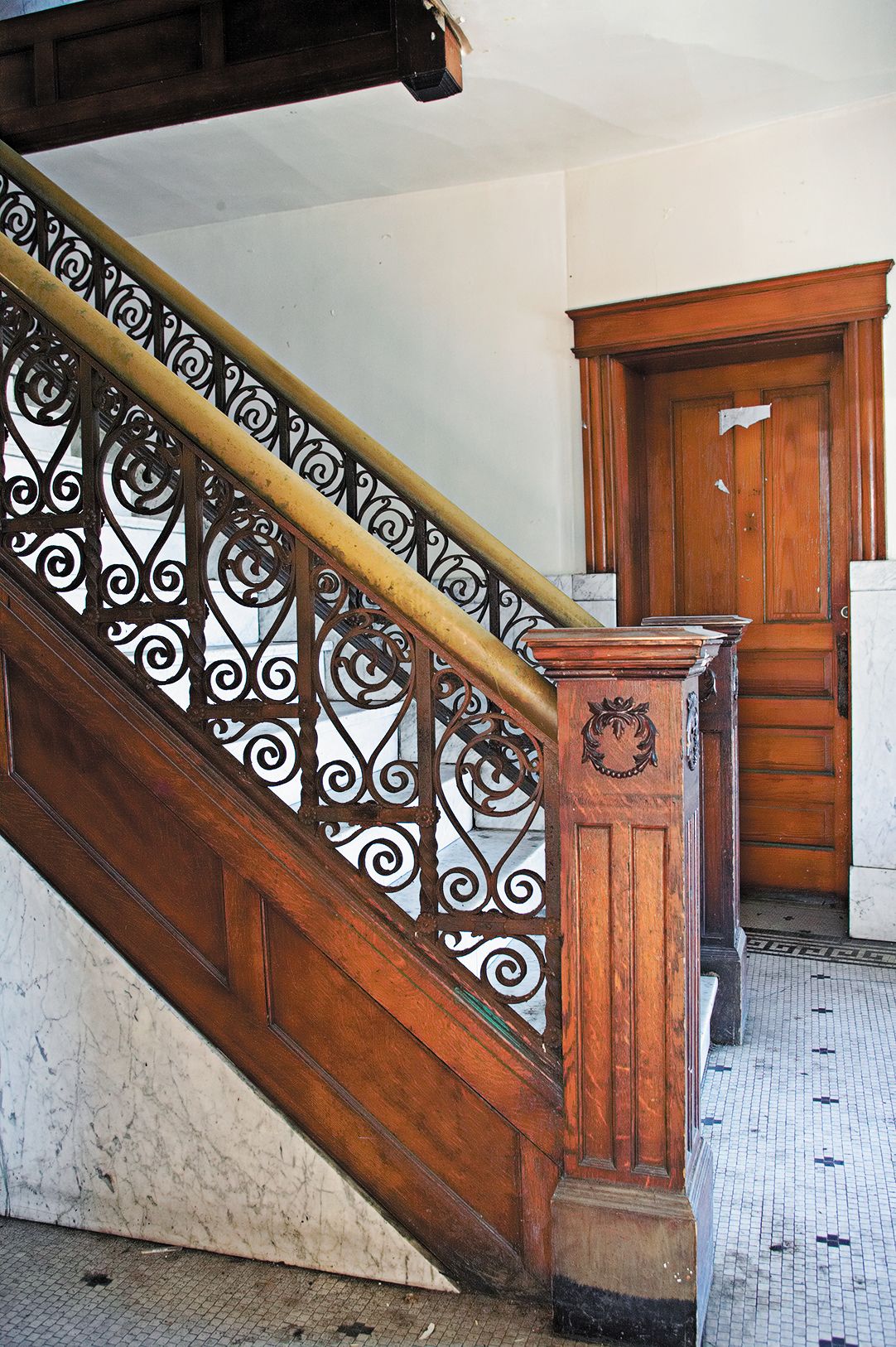
The brick Colonial Revival–style apartment house was boarded up, its interior dark and dusty. But with the plywood stripped from the front door, sunlight glinted off the white marble wainscoting lining the entry foyer and lit up the wrought-iron staircase railing anchored to a carved wooden newel post. Those were just a few of the architectural elements that Jerry Janszen and his Cincinnati, Ohio, deconstruction crew were going to delicately remove from this and another circa-1900 building next door before a developer started building a new condo complex on the site.
Salvaging the Staircase
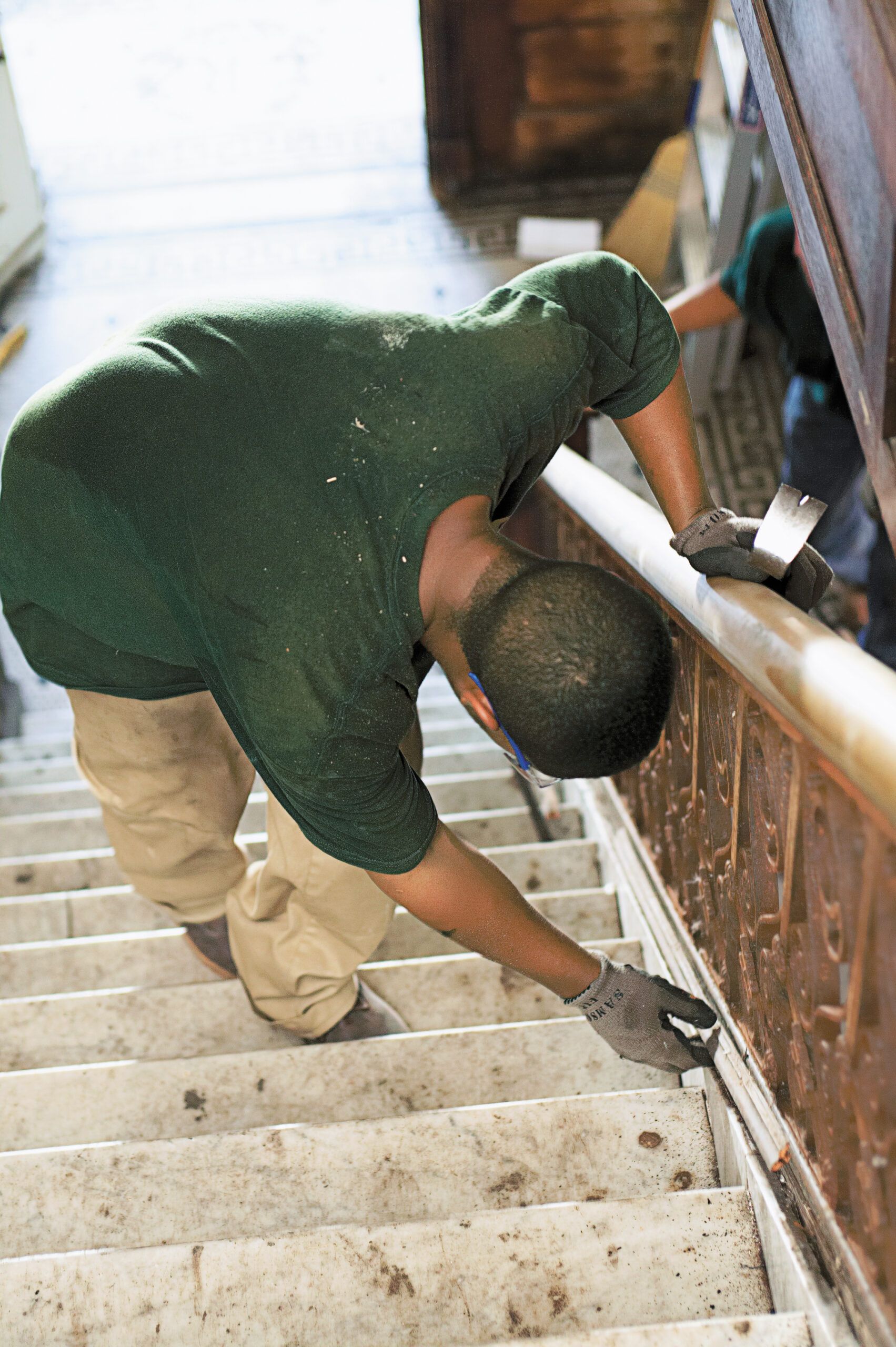
Janszen is the director of Building Value, one of more than a dozen nonprofit organizations that salvage building materials that would otherwise end up in landfills. Much of what is removed—raised-panel pocket doors, custom-crafted kitchen cabinets, bronze light fixtures, entire staircases—is then sold in retail stores, typically, for less than it would cost to buy new materials. The money raised at Building Value’s store funds job training for disadvantaged and disabled adults in the Cincinnati area.
Shown: Deconstruction crew member Anthony Morris carefully removes wood trim beneath a wrought-iron staircase railing.
Salvaging the Staircase
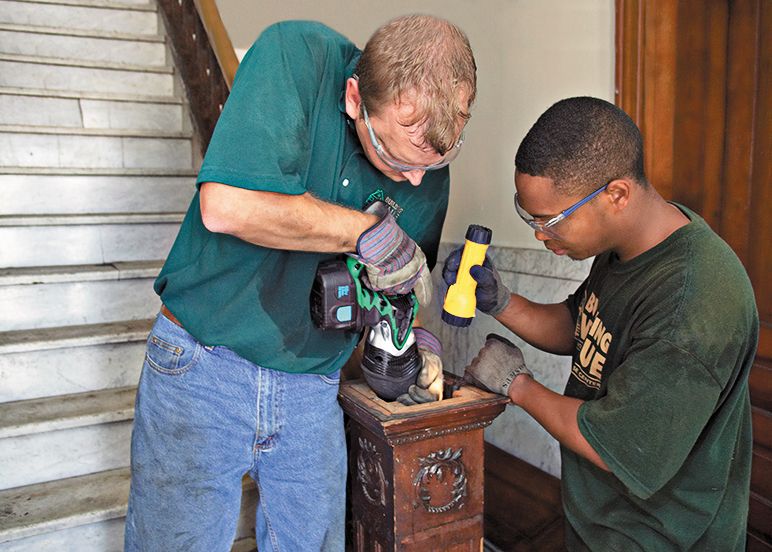
For a developer, hiring a deconstruction crew is good business. The service defrays disposal costs, and because the salvaged materials are considered a charitable donation, the developer gets a tax write-off. Homeowners who do their own deconstruction, say for a kitchen remodel, can also qualify for the tax break if they donate their discarded materials. But perhaps the best benefit for the DIYer is being able to find just the right vintage farmhouse sink or heart pine flooring to finish off a project.
Shown: Crew manager Doug Kloth and Anthony Morris take the top off the wooden newel at the end of the staircase to access the internal anchoring system that secures the railing to the post.
Salvaging the Staircase
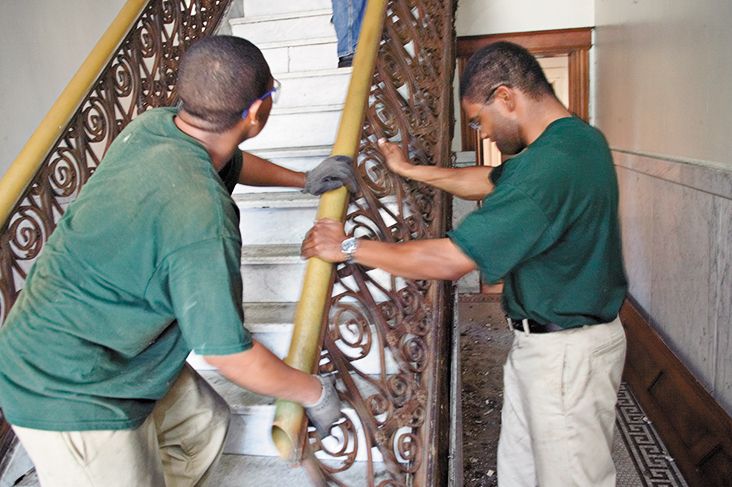
After releasing the fasteners, Morris and crew member Brian Burks ease the railing off in one piece. They also save the marble stair stringers, treads, and risers.
Salvaging the Staircase
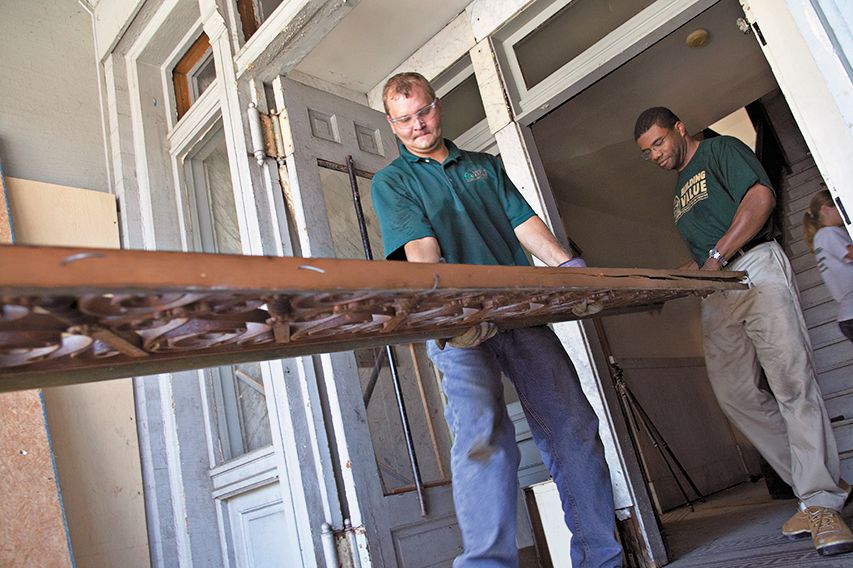
The entire staircase will be reassembled in a new restaurant being built in Cincinnati’s rejuvenated Over-the-Rhine neighborhood.
Salvaging the Built-ins
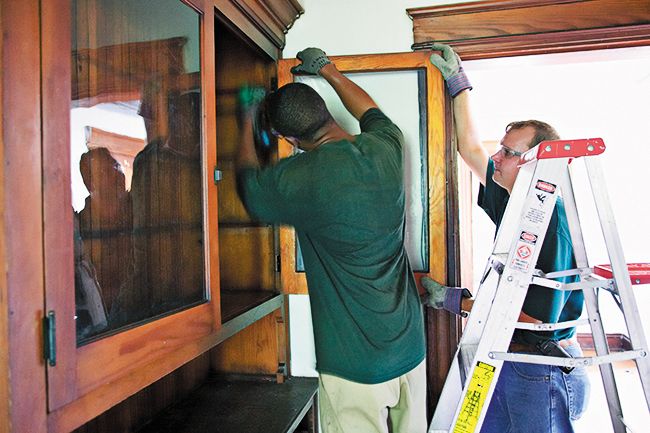
Before removing this built-in cabinetry unit, crew members take off its fragile glass doors. Next, they slice through the multiple coats of paint and a layer of plaster that overlap the edges of the cabinet’s top and sides so they can gently pry the unit off the wall.
Salvaging the Built-ins
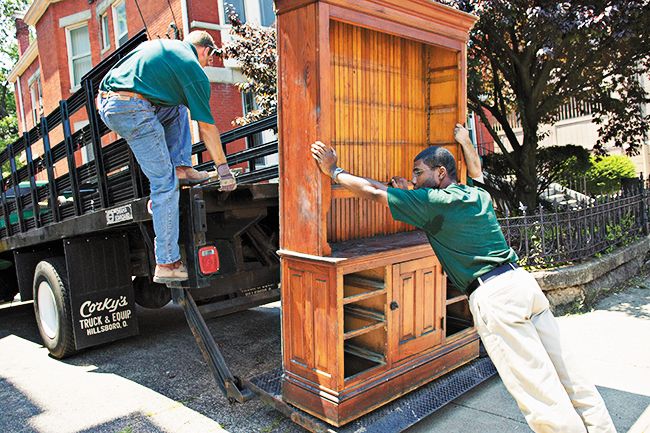
A built-in like this can be reinstalled in a kitchen as a china cupboard or in an upstairs hallway to store extra linens.
Salvaging the Fireplace Mantel
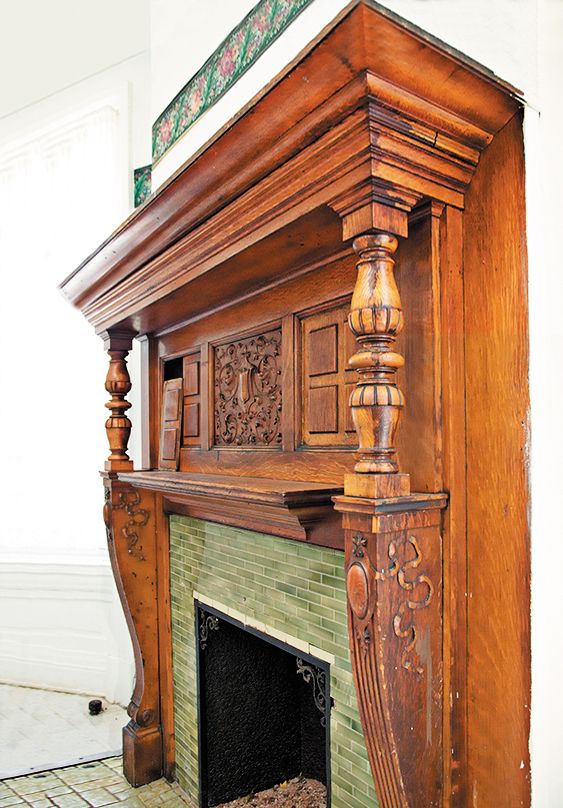
This oversize carved wooden mantel can be reinstalled around a new fireplace without major retrofitting.
Salvaging The Fireplace Mantel
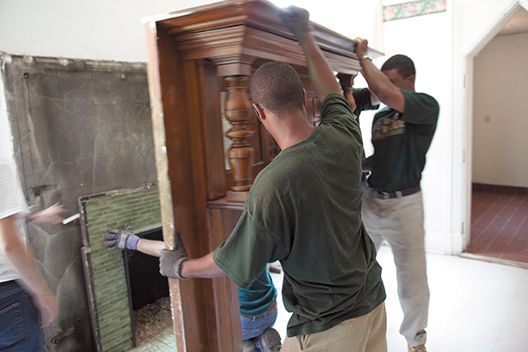
Oftentimes salvaged wood mantels are too short and narrow to conform to modern building codes, which regulate the distance between an open flame and a combustible material.
Salvaging the Fireplace Surround

The mantel’s green tiled surround can be reinstalled with the mantel.
Salvaging an Accent Door
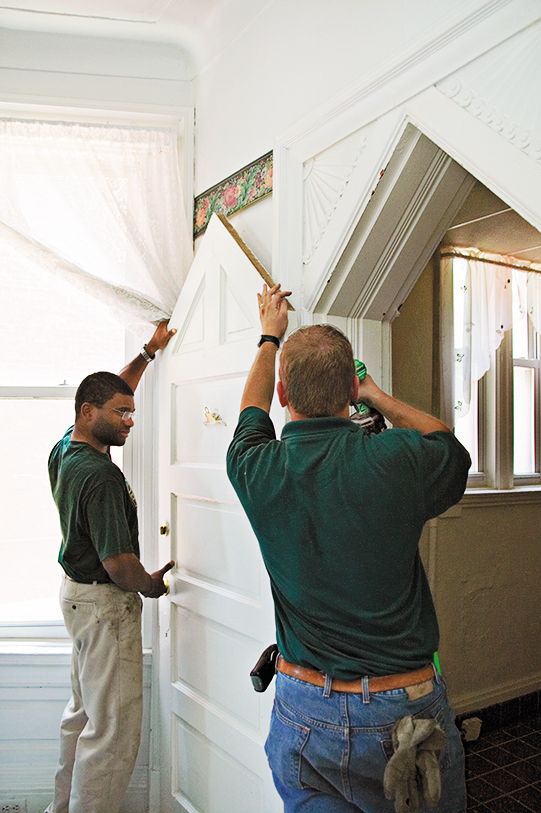
At first, the deconstruction crew didn’t think this unusual diamond-shaped door and casing could be recycled.
Salvaging an Accent Door

Then they pried off the trim boards at the top and saw that the door hung in a standard square opening.
Salvaging an Accent Door
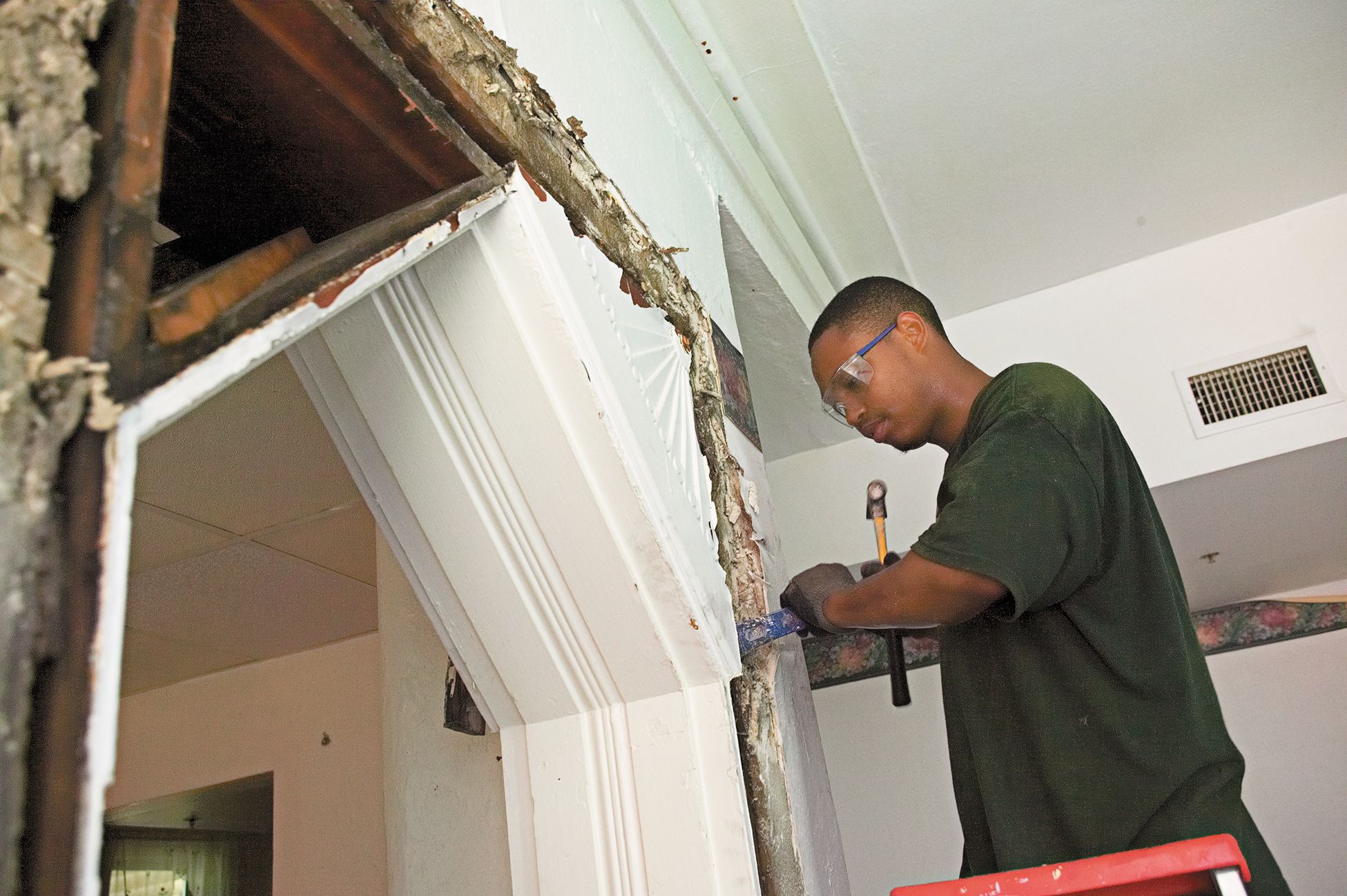
All they had to do was keep the framing intact, so the door and frame could be reinstalled as a complete unit.
Removing the Pocket Doors
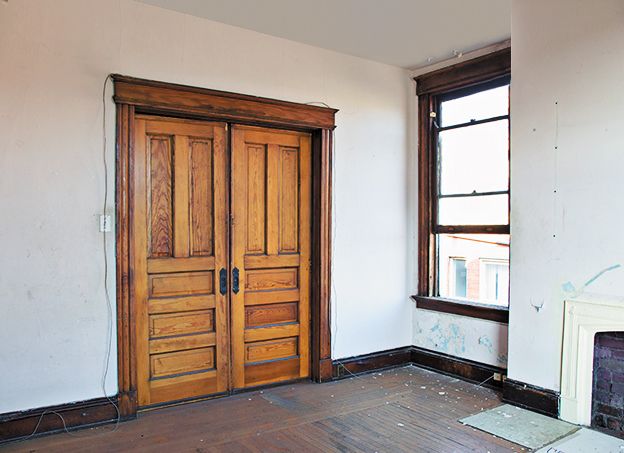
Salvaging a pocket door, which slides open into a recess in the wall along a metal track, is more difficult than taking a swinging door off its hinges.
Salvaging the Pocket Doors
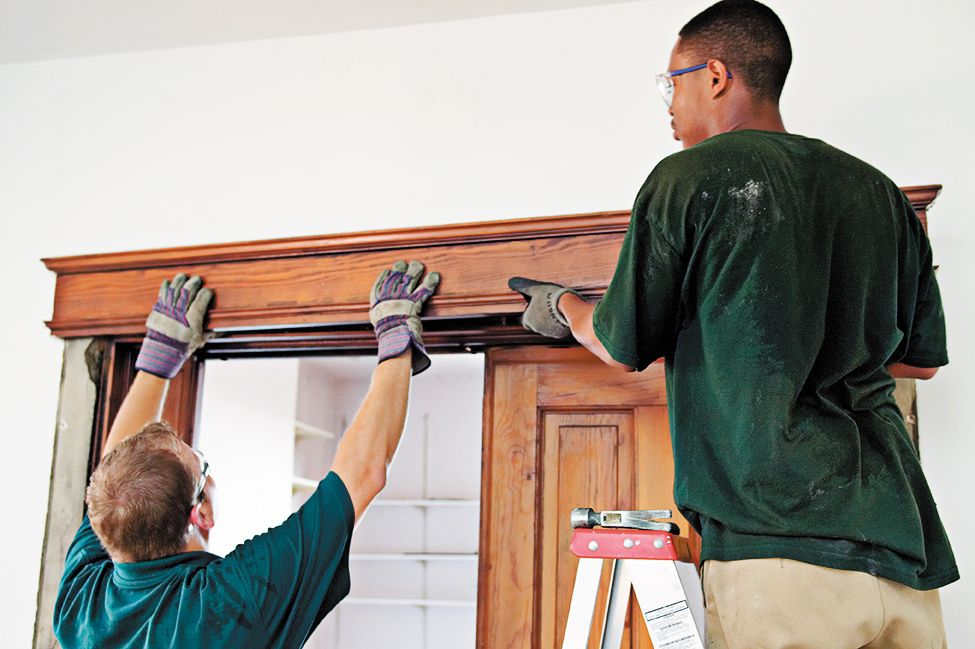
To release the fasteners that attach the door to the track, the crew must first remove the surrounding wood casing.
Salvaging the Pocket Doors

This reveals the door’s hidden hardware.
Salvaging the Pocket Doors
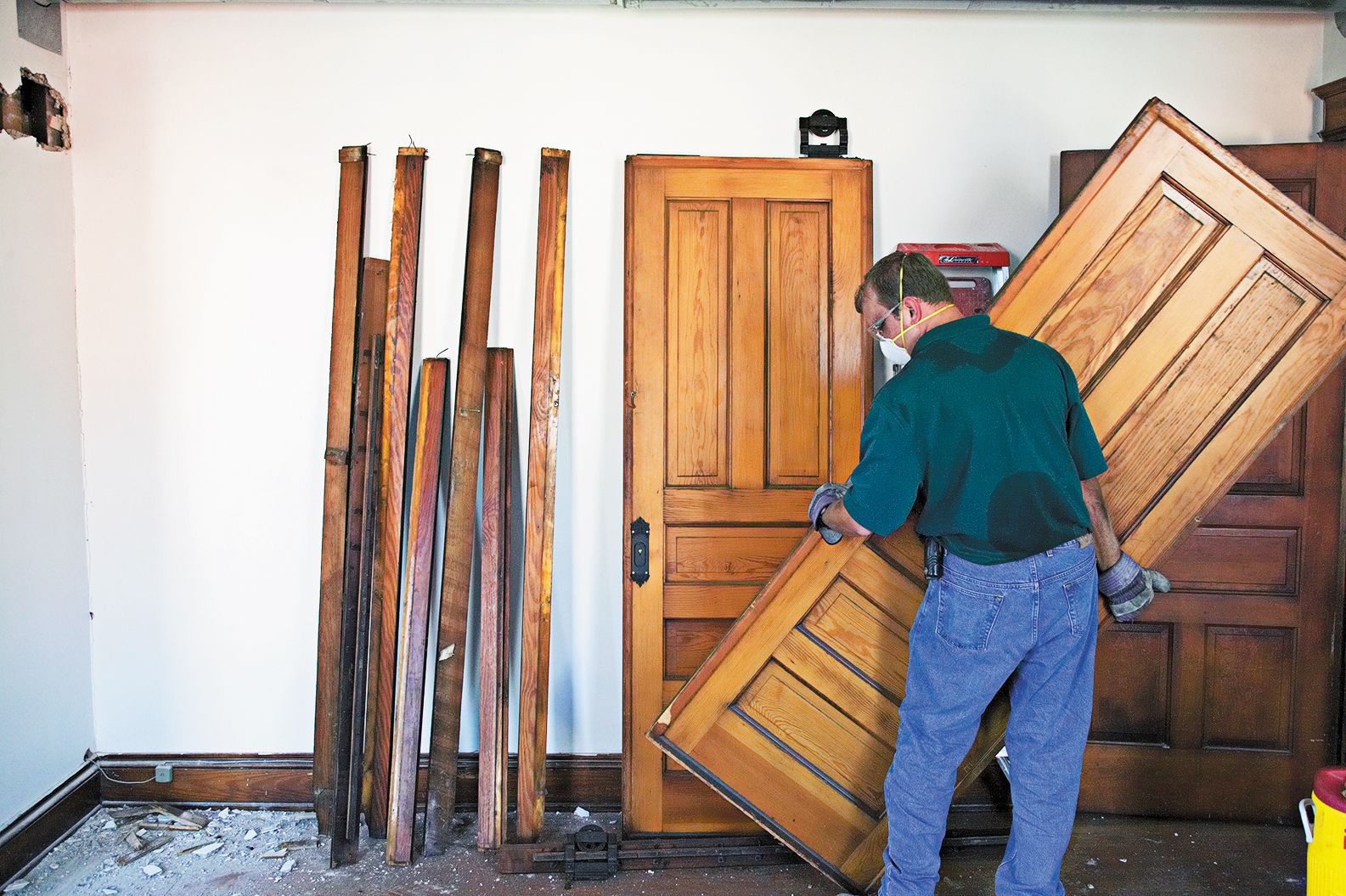
Pocket doors are big sellers at Building Value’s retail store, particularly to cordon off space for a bedroom in open-plan loft apartments.
